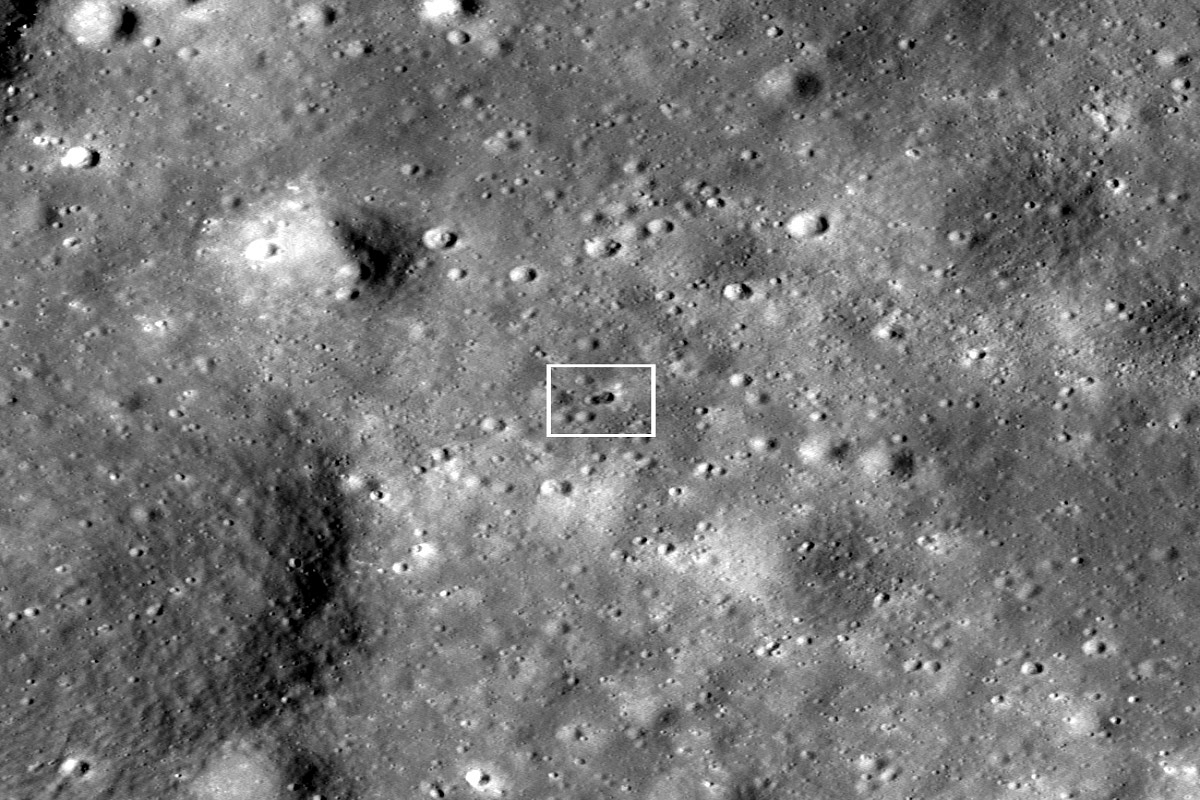Tech
Explained: Mystery Behind 'First-Ever' Inadvertent Rocket Body Impact On Moon

Pic Via NASA Website
An event on the moon that was revealed last week by US space agency NASA, has left the space industry guessing.
A significant event that 'rocked' the moon
Late last year, astronomers discovered a rocket body heading toward a lunar collision. The impact of the rocket body on lunar surface occurred on 4 March, with NASA's Lunar Reconnaissance Orbiter (LRO) later spotting the resulting crater, the US space agency said last week.
"Surprisingly, the crater is actually two craters, an eastern crater (18-meter diameter, about 19.5 yards) superimposed on a western crater (16-meter diameter, about 17.5 yards)," NASA said in a statement.
The double crater was unexpected and may indicate that the rocket body had large masses at each end, the space agency said.
"Typically a spent rocket has mass concentrated at the motor end; the rest of the rocket stage mainly consists of an empty fuel tank. Since the origin of the rocket body remains uncertain, the double nature of the crater may indicate its identity," it added.
First-ever rocket body impact to create double craters on Moon
The event holds significance as no other rocket body impacts on the Moon created double craters.
The four Apollo SIV-B craters were somewhat irregular in outline (Apollos 13, 14, 15, 17) and were substantially larger (greater than 35 meters, about 38 yards) than each of the double craters.
The maximum width (29 meters, about 31.7 yards) of the double crater of the mystery rocket body was near that of the S-IVBs, the agency said.
SpaceX and China both deny claims by astronomers
Interestingly, despite the astronomers tracking the rocket body on the Lunar collision course for months, no country or company came forward to own it.
Earlier, the space object trackers claimed that it was likely a piece of a SpaceX launch vehicle from 2015 but the Elon Musk-led space company denied the claim.
Later, skywatchers led by Bill Gray and others, including NASA, decided it was more likely to be the 2014 Chang’e 5-T1 launch out of China but Beijing also denied the claim, saying the launch vehicle in question burned up on reentry to earth.
The skywatchers, however, maintained that China simply got two different, but similarly named, lunar missions "mixed up". They said China mixed up Chang'e 5-T1 lunar mission launched in October 2014 with Chang'e 5 lunar mission launched in November 2020, a different mission, with a booster that did re-enter over the Pacific Ocean a week after it was launched.
However, despite the skywatchers' claim, a mystery still remains whether the object was part of the Chinese lunar mission or not. Besides, it is not expected that any country or company will own up the rocket body as they do not want to be responsible for the first completely inadvertent lunar impact in history.
How the impact was different than other impacts in the past?
It should be noted that other spacecraft, too, have collided on the moon surface, but it was on purpose or part of a botched landing - to put in other words, the impact was intentional, just a little harder than expected - not just a wayward piece of space junk.
Why the object was not tracked?
However, it is interesting that despite hundreds of terrestrial telescopes and radars, space-based sensor networks and cameras involved in the global space monitoring efforts, a whole rocket stage was in orbit for six or seven years, eventually getting all the way to the moon, without being identified.
One of the reason the object went undetected could be that the high-altitude junk has been of no or less concern to anybody outside the asteroid surveys.
Objects of this sort are not tracked by the US Space Force as they mostly use radar, which is 'near-sighted'.
The US Space Force radar can track objects four inches/10 cm across in low orbits, but can't see big rocket stages like this when they are as far away as the moon.
Can such impacts occur again on Moon in future?
Experts opine that this is not likely to be a one-off event that went almost undetected barring few months ahead of collision, and could repeat in future as the number of moon missions will rise but technology deployed to track space objects remain unchanged for years.
However, they believe that such events would remain "exceedingly rare".
"It’s possible an accidental moon-strike like this could happen again in the future, depending on the number of missions that put rocket bodies into those orbits and given enough time (years or decades)," said Darren McKnight, senior technical fellow at Leo Labs, which has been building a new network of debris-tracking radar all over the world.
Introducing ElectionsHQ + 50 Ground Reports Project
The 2024 elections might seem easy to guess, but there are some important questions that shouldn't be missed.
Do freebies still sway voters? Do people prioritise infrastructure when voting? How will Punjab vote?
The answers to these questions provide great insights into where we, as a country, are headed in the years to come.
Swarajya is starting a project with an aim to do 50 solid ground stories and a smart commentary service on WhatsApp, a one-of-a-kind. We'd love your support during this election season.
Click below to contribute.
Latest